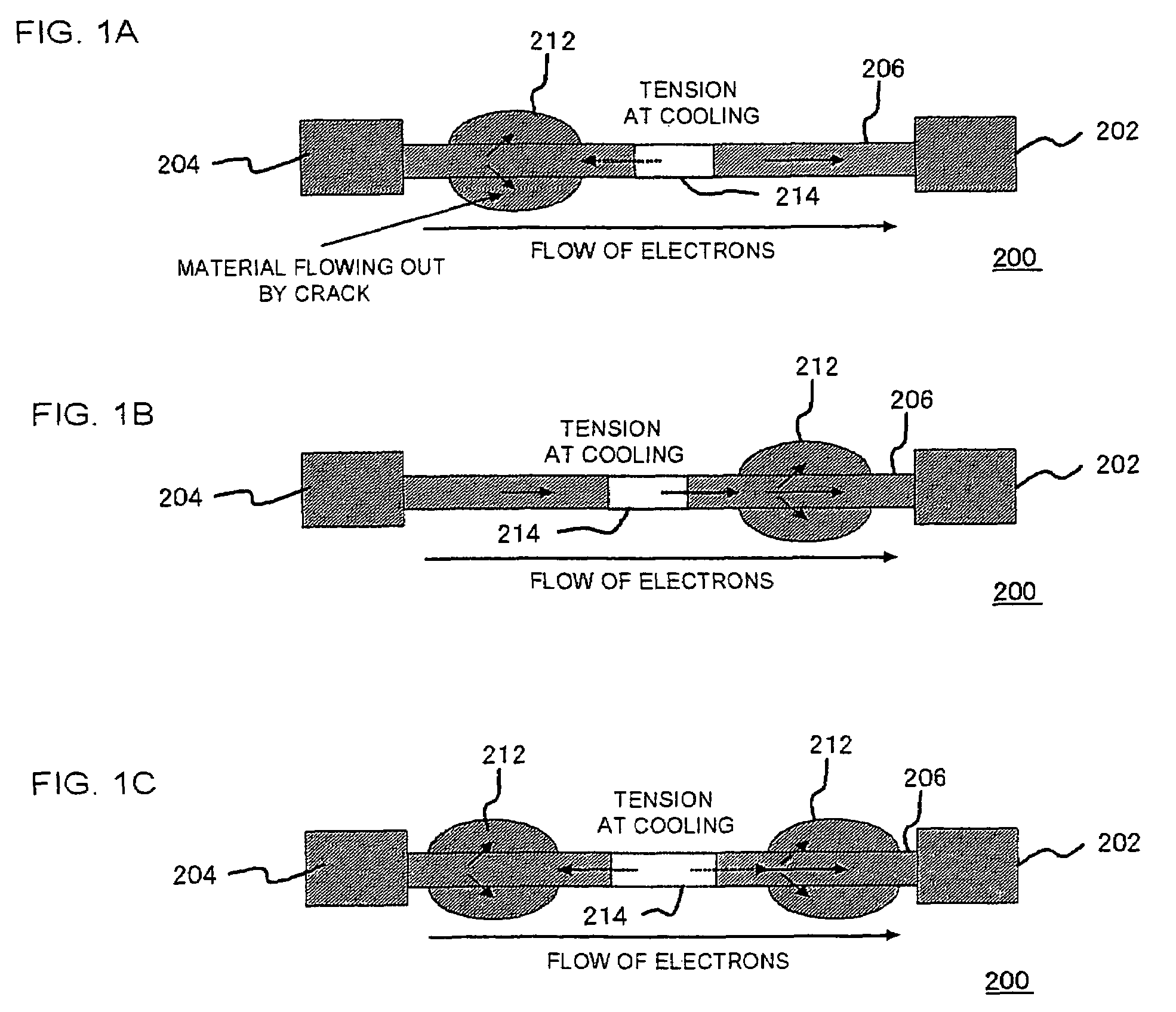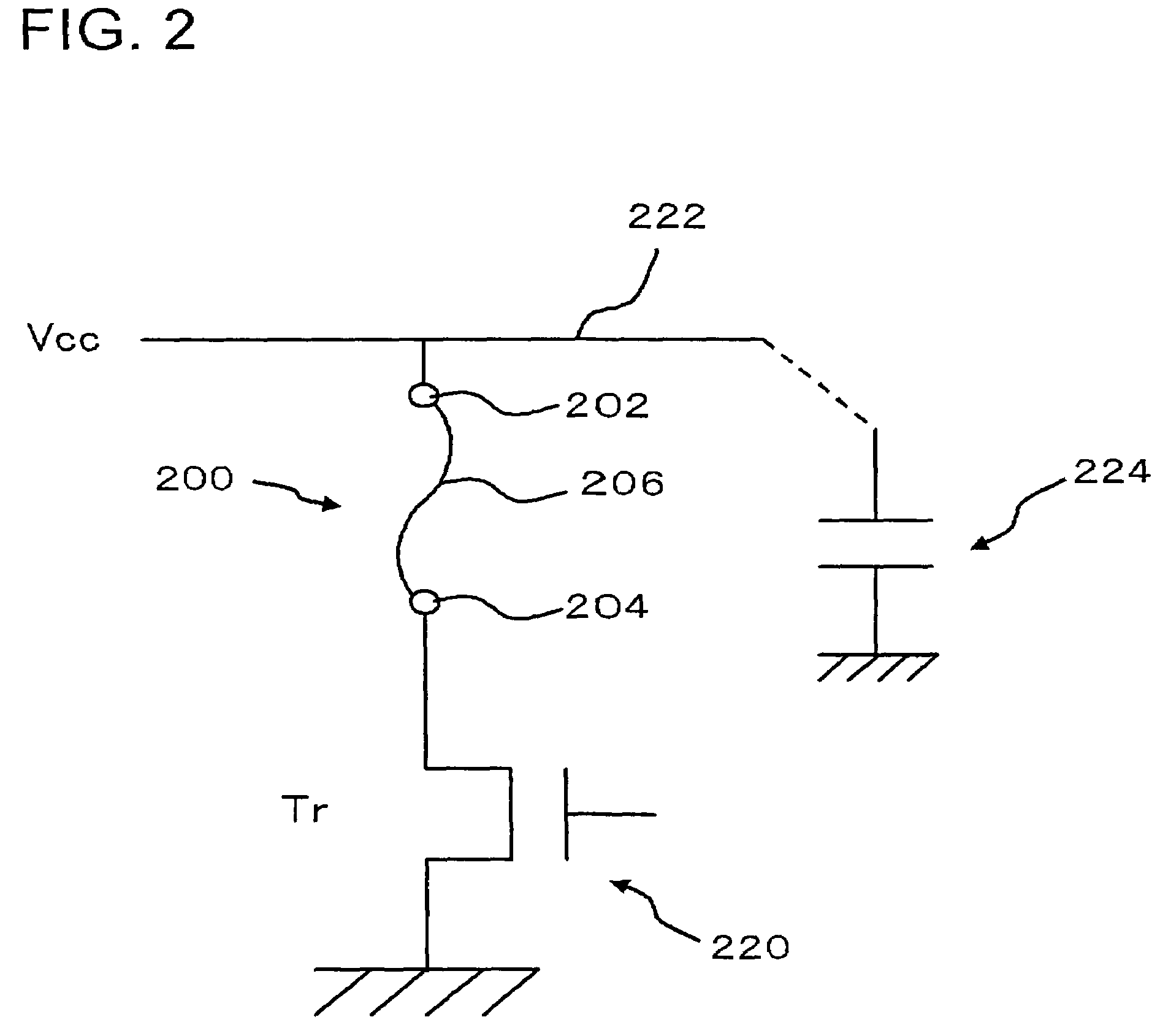Semiconductor device with electric fuse having a flowing-out region
a technology of electric fuse and semiconductor device, which is applied in the direction of semiconductor device, semiconductor/solid-state device details, radiation control device, etc., can solve the problems of limiting the formation method of insulating film, and the inability to detect the cutting status of electric fuse, so as to improve the cutting condition of electric fuse cu
- Summary
- Abstract
- Description
- Claims
- Application Information
AI Technical Summary
Benefits of technology
Problems solved by technology
Method used
Image
Examples
examples
[0091]FIG. 8 shows a cross-sectional view, which was formed by actually forming an electric fuse 200 having an interconnect structure of a single damascene structure similar as shown in FIG. 6A and then cutting the formed fuse via a crack assist type process. Here, an interlayer insulating film, in which the via 128 was formed, was composed of SiOC (Black Diamond, commercially available from Applied Materials Inc., Santa Clara, Calif., USA). Besides, an interlayer insulating film, in which the upper layer interconnect 134 was formed, was composed of SiOC (Aurora, commercially available from ASM International N.V., Holland). Both of the Black Diamond and the Aurora are porous films of SiOC, and the Aurora has lower specific dielectric constant, lower film density and composed of softer film than the Black Diamond.
[0092]As shown in the diagram, in the electric fuse 200, the flowing-out region 142 is formed at the upper layer interconnect 134, and the void region 140 is formed between ...
PUM
| Property | Measurement | Unit |
|---|---|---|
| voltage | aaaaa | aaaaa |
| widths | aaaaa | aaaaa |
| widths | aaaaa | aaaaa |
Abstract
Description
Claims
Application Information
 Login to view more
Login to view more - R&D Engineer
- R&D Manager
- IP Professional
- Industry Leading Data Capabilities
- Powerful AI technology
- Patent DNA Extraction
Browse by: Latest US Patents, China's latest patents, Technical Efficacy Thesaurus, Application Domain, Technology Topic.
© 2024 PatSnap. All rights reserved.Legal|Privacy policy|Modern Slavery Act Transparency Statement|Sitemap



